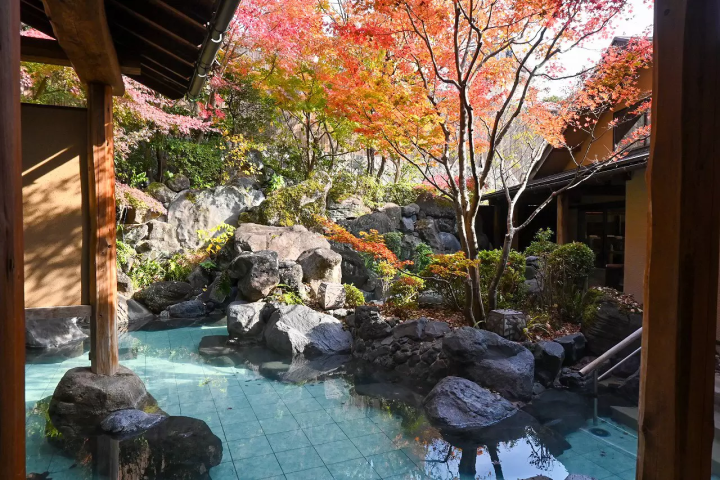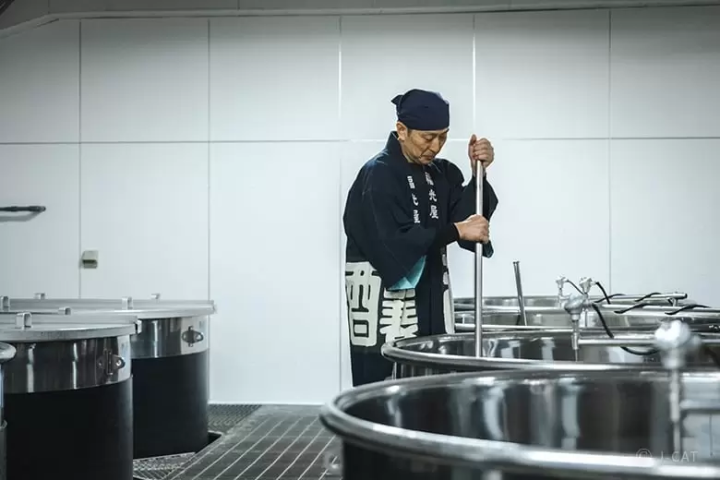12 Common Condiments Used In Japanese Cuisine

Japanese dishes, from sushi to ramen, to tempura, all use special condiments and ingredients to add flavor. From soy sauce and wasabi to seven-spice blends, the world of Japanese condiments is full of flavor. We introduce 12 classic condiments utilized in Japanese cooking and found at restaurants.
12 Classic Condiments of Japanese Cuisine - Soy Sauce, Ginger, and More
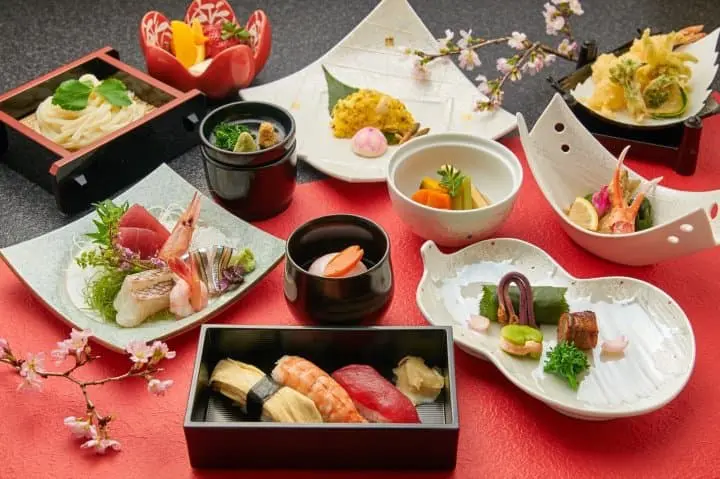
When you eat sushi or go to Japanese restaurants, you will come across several jars or bottles of different condiments placed on the table.
But, do you know what those condiments are or what they taste like? Here are some of the basic condiments found in Japanese restaurants.
12 Common Condiments Used In Japanese Cuisine
1. Soy Sauce - Shoyu
2. Wasabi - Japanese Horseradish
3. Pickled Ginger for Sushi - Gari
4. Tangy Worcester Sauce
5. Shichimi Seven Spice Blend and Ichimi Chili Pepper
6. Pickled Ginger - Beni Shoga
7. Sesame Seeds - Goma
8. Japanese Mustard - Karashi
9. Chili Oil - Rayu
10. Salt - Shio
11. Pepper - Kosho
12. Vinegar - Osu
1. Soy Sauce - Shoyu
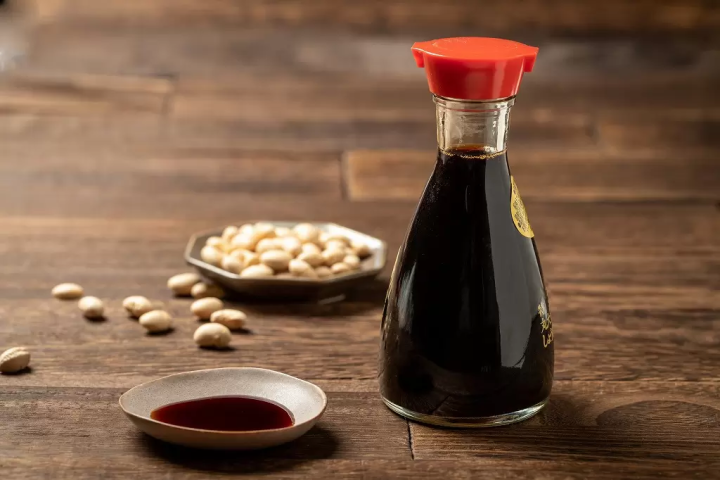
Picture by Pixta
Shoyu, or soy sauce, is perhaps the most well known of Japanese condiments. It's a dark sauce made from fermented boiled soybeans and roasted wheat, creating a salty but pleasant, savory taste. You will find it not only in traditional Japanese restaurants but also in most any restaurant in Japan.
It's the most essential condiment for Japanese sushi and sashimi. At traditional sushi restaurants, soy sauce is also called "murasaki." Kikkoman is the largest brand of soy sauce, but smaller, rarer brews of soy sauce in different flavors are made throughout Japan.
↑ Return to the top of article.
2. Wasabi - Japanese Horseradish

Wasabi is a green paste condiment prepared at traditional Japanese restaurants. This variety of Japanese horseradish is typically eaten with sushi and sashimi. You may experience a burning sensation inside your nose or even pain in your head if you eat too much at once, but this doesn't last very long. This is a completely unique Japanese condiment, so you should definitely try it when here. Remember that a little bit goes a long way!
Shizuoka Prefecture, near Mt. Fuji, is famous for its delicious wasabi, and there is even a wasabi sightseeing farm in Nagano Prefecture. If you travel to these areas, you will find creative dishes and food products utilizing this pungent, spicy paste.
↑ Return to the top of article.
3. Pickled Ginger for Sushi - Gari

Photo by Pixta
Pickled and fermented foods in Japan are found everywhere, including at sushi restaurants. Called "gari" in Japanese, this type of pickled ginger is used to freshen the palate when eating sushi. Gari is ranges from a slightly yellow, light color, to a faint pink. Try eating it in between bites of your rolls for a refreshing, spicy and salty treat.
↑ Return to the top of article.
4. Tangy Worcester Sauce for Okonomiyaki, Yakisoba, and Katsu Cutlets
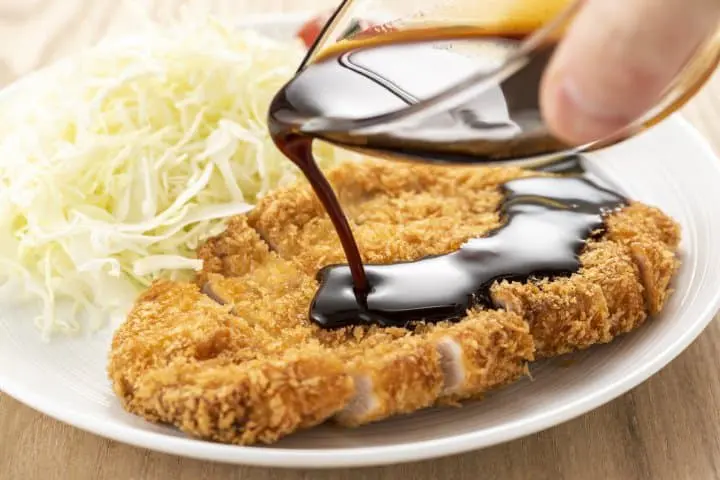
Photo by Pixta
Sauce is found at family-style restaurant chains like Gusto, and at western-style Japanese restaurants. It is black or brown in color and has a sweet-sour taste. It's essentially Worcester sauce, which is made from vegetables, fruits, spices, sugar and soy sauce. In Japanese, it's typically just known as "sauce."
At some restaurants, it may look quite similar to soy sauce, but it is thicker and smells sweet. If you can't tell which one is which, try smelling it before you pour. Sauces come in different varieties and thicknesses, used for katsu pork cutlets (shown in picture), okonomiyaki, yakisoba, and takoyaki. It is an essential condiment for dishes, giving it a tangy, savory, and sweet flavor that is very satisfying.
↑ Return to the top of article.
5. Shichimi Seven Spice Blend and Ichimi Chili Pepper
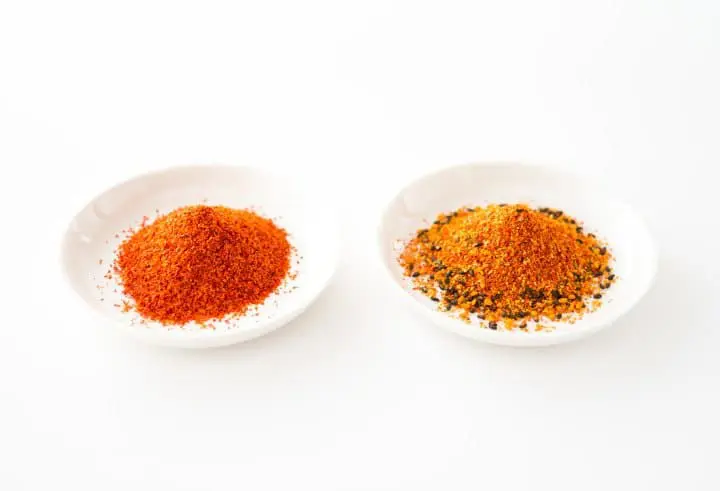
Photo by Pixta
You will find red flakes of spice like in the picture above at soba or udon noodle restaurants in Japan. It also pairs deliciously with tempura. There are two types: one is called ichimi, which is ground dried red chili peppers, and the other is shichimi, which has a base of ichimi, with six other spices added to it. If you're a spicy food fan, try adding some to your noodles or dish for a mild to moderate kick. Sprinkle on a small amount at first until you get used to the heat.
↑ Return to the top of article.
6. Pickled Ginger - Beni Shoga
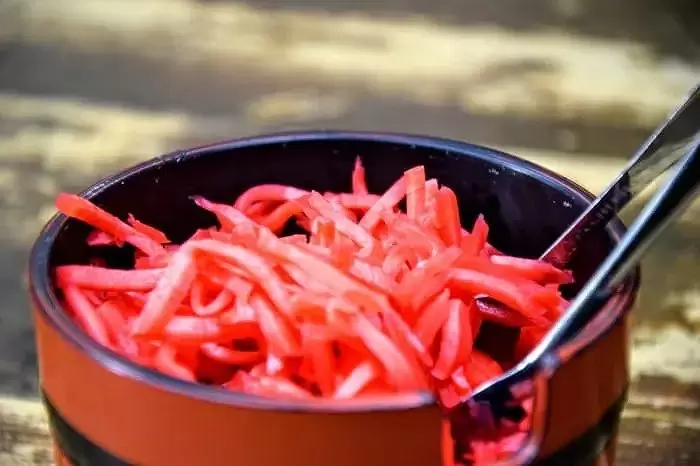
Picture from Know Your Noodles – The Uniqueness of Hakata Ramen
Beni shoga is found at restaurants serving gyudon (beef rice bowl restaurants), like Yoshinoya and Matsuya, and at Hakata ramen restaurants. It is ginger pickled in plum vinegar and colored with shokubeni.* It tastes sour, sweet, salty and spicy all at the same time. Its vivid red-pink hue gives dishes a pop of color and is said to boost your appetite.
Beni shoga is also used often for takoyaki and okonomiyaki in areas like Osaka, adding a refreshing layer of flavor. It can be found as a tempura ingredient sometimes, too.
*Shokubeni: red food coloring, typically made from natural ingredients.
↑ Return to the top of article.
7. Sesame Seeds - Goma
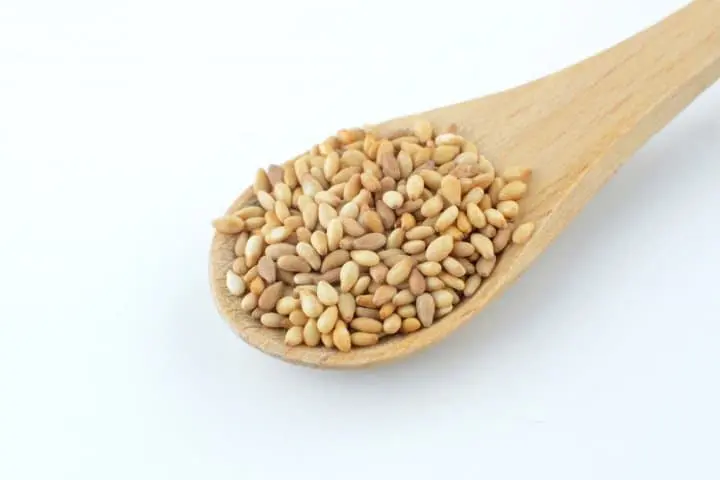
Sesame seeds in Japan are a popular condiment used in many dishes, including ramen. The most common types of sesame seeds, or goma, are white, black, and golden (shiro goma, kuro goma, and kin goma), and all contain healthy fats and vitamins, making them a highly-nutritional and tasty condiment. Sesame seeds are found in small grinders or in jars at restaurants and add a nutty, slightly creamy component to the dish you're enjoying. Sprinkle on some whole sesame seeds or crushed sesame seeds to the ramen to try it yourself.
Sesame seeds are used frequently in cooking in Japan––black sesame is used often in sweets, as a topping for mochi and in baking.
↑ Return to the top of article.
8. Japanese Mustard - Karashi
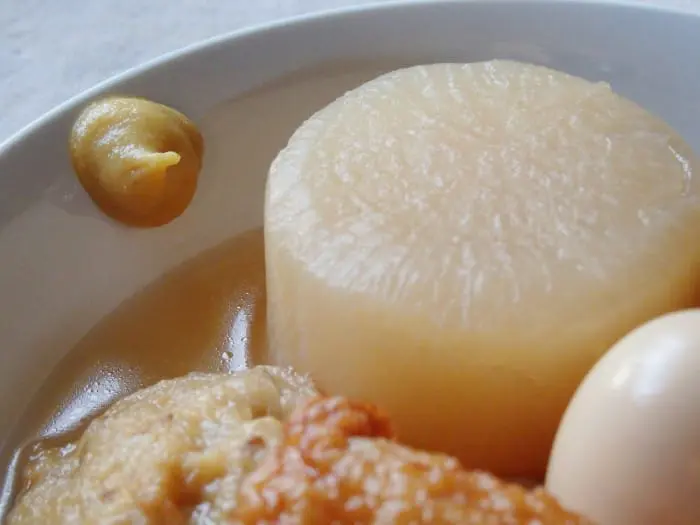
Karashi is a yellow mustard paste often found in little packages or in a small jar. It's spicier than what you might find in other countries. Karashi is found at Chinese, Japanese, and family restaurants, as well as at food stands. Karashi is usually added to dishes such as katsu (fried and breaded pork cutlet) and oden (a Japanese winter hot pot dish). It also pairs well with hiyashi chuka (a Japanese chilled noodle salad) and shumai pork dumplings. Anyone who is a fan of spice should try this refreshing, hot mustard.
Read also
↑ Return to the top of article.
9. Chili Oil - Rayu
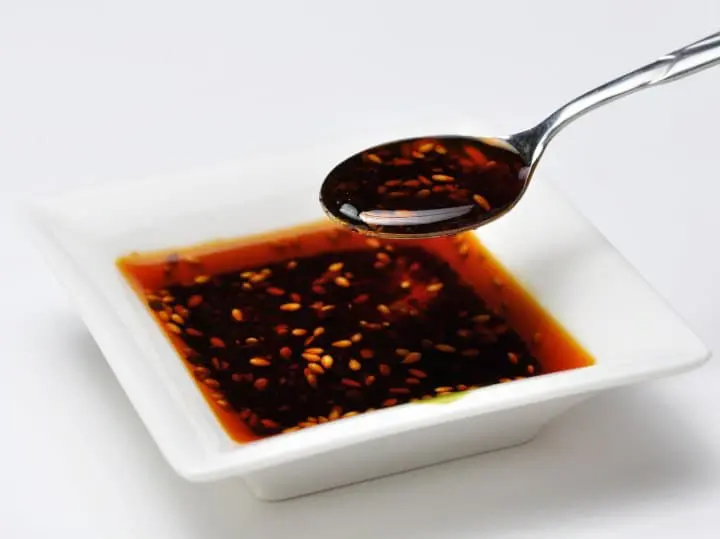
Photo by Pixta
You will find this vivid red oil in Chinese restaurants and at rāmen shops. It's made from chili peppers and it is really potent when added to dishes, even if you only add a small amount. Though it's mostly used to make sauce for gyoza as mentioned above, if you're a spicy food fan, why not add it to other dishes too?
↑ Return to the top of article.
10. Salt - Shio
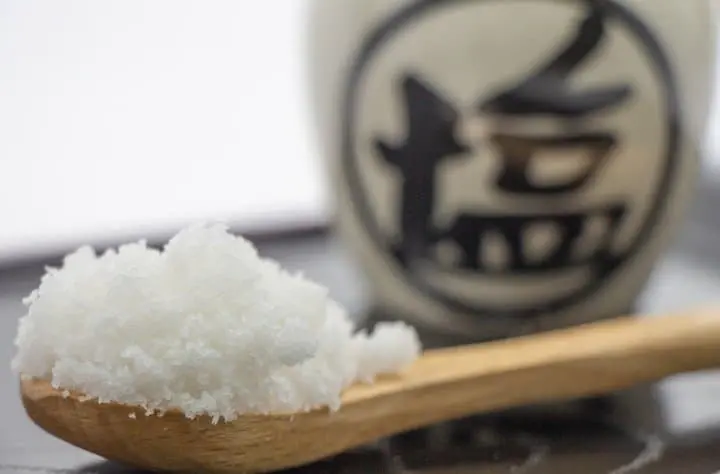
Salt is a condiment used in every country, but in Japan, you might discover unexpectedly creative types of salt. In addition to ordinary table salt and rock salt, there is wasabi salt, plum salt, and even
If you take a closer look at the salt shakers in Japan, you might see some larger white grains inside - it's rice, placed there to absorb moisture and keep the salt dry.
↑ Return to the top of article.
11. Pepper - Kosho
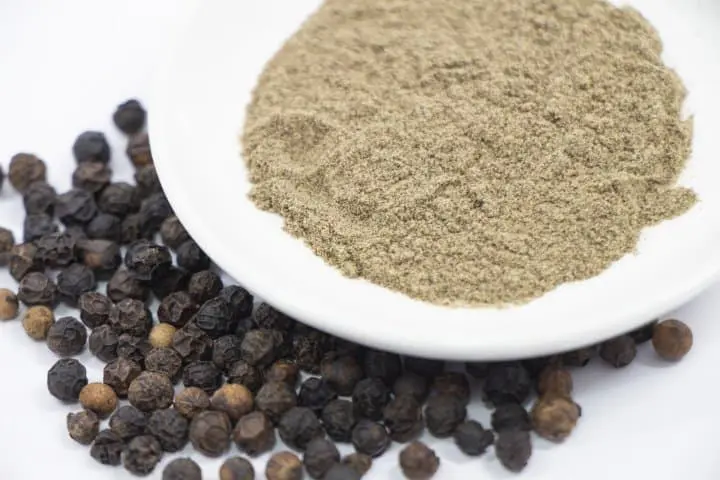
Pepper is also used in most of the countries in the world and Japan is no exception. There are two types of pepper commonly found in Japan: black pepper and white pepper. White pepper is more commonly found at Chinese restaurants, and because it looks quite similar to salt, it's a good idea to double-check before adding it to your meal. Black pepper could be in either a pepper mill or in a shaker.
The next time you are out at a Japanese restaurant, why not give one or more of these condiments a taste test? You might just find the mild spice you have been looking for.
↑ Return to the top of article.
12. Vinegar - Osu
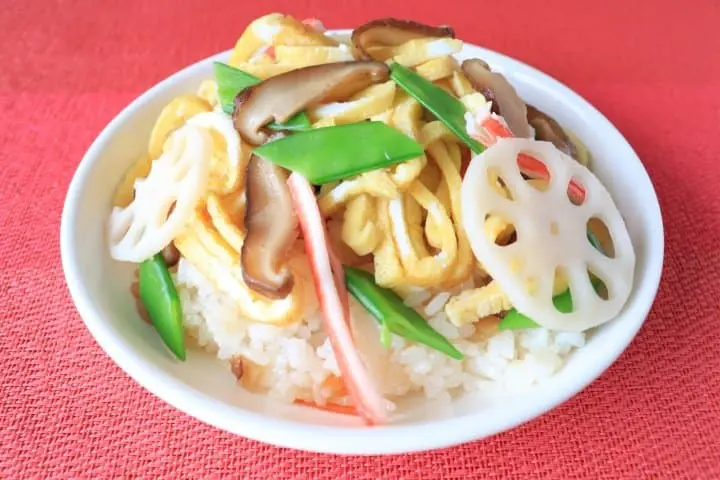
You will find vinegar, or osu, at the tables and counters of most ramen shops and Chinese restaurants in Japan. As you know, vinegar tastes sour but adds a sharp freshness to dishes. Most of the vinegar found at restaurants in Japan is rice vinegar. This vinegar is also used when making vinegared rice used to make sushi.
The vinegar in Japan is transparent or slightly yellow in color. A great way to use it is to make a sauce for gyoza (Japanese potstickers) by mixing soy sauce and vinegar together and then adding some chili oil (ra-yu). You can also mix some vinegar into rice to create the classic sushi rice.
This is the official account of MATCHA's editorial department. Our articles feature useful travel information for visitors to Japan, from how-to guides to recommended places to visit.









































![[Coupons available] We're open even during the New Year holidays! We'll bring you information on our New Year's sale!](https://resources.matcha-jp.com/resize/720x2000/2025/12/26-254137.webp)
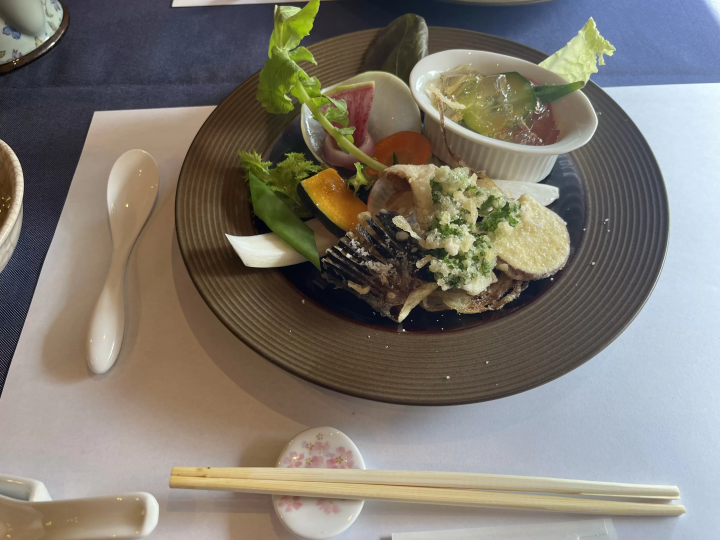
![[For beginners and debutants] Special feature on recommended ski resorts and ski tours!](https://resources.matcha-jp.com/resize/720x2000/2025/12/26-254120.webp)
